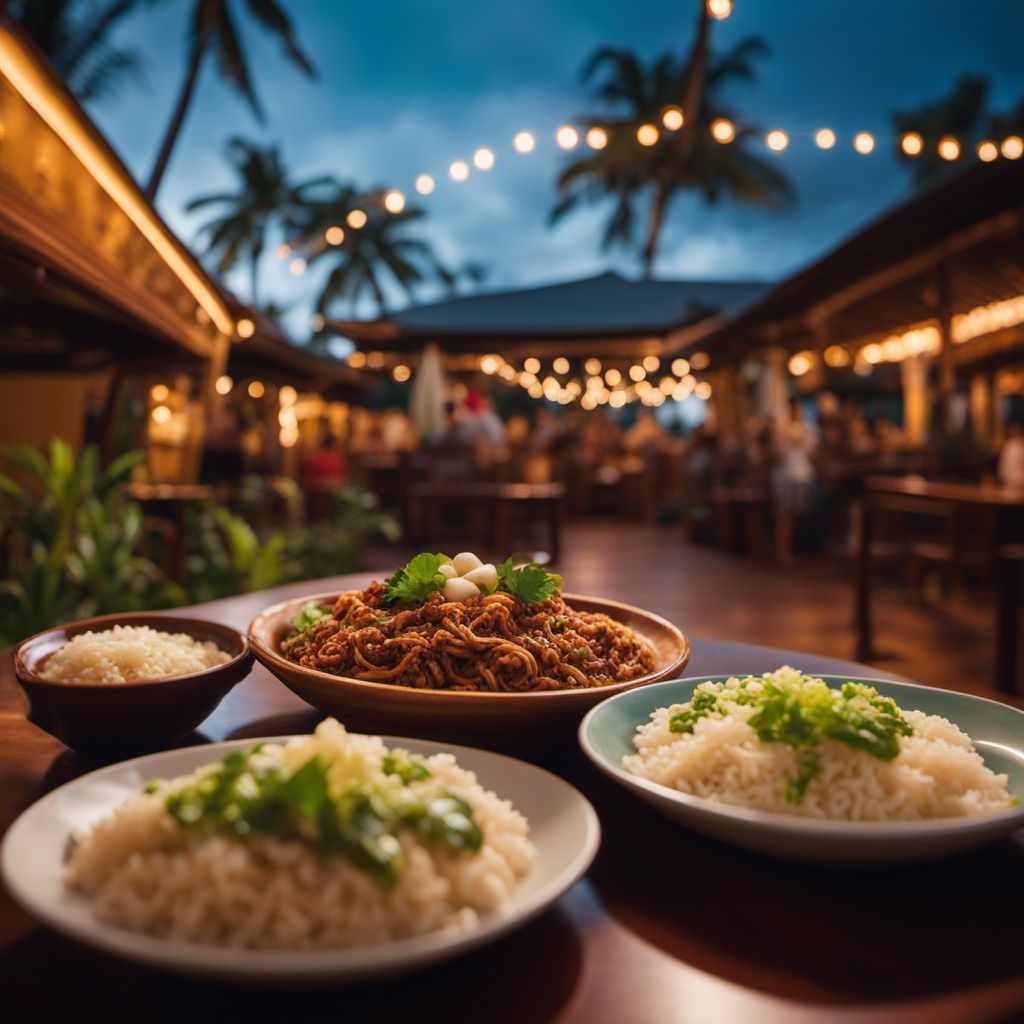
Cuisine
Tuvaluan cuisine
Tuvaluan cuisine is simple and healthy, with a focus on fresh, natural ingredients. The dishes are often prepared using traditional cooking methods such as underground ovens and open fires. The cuisine is heavily influenced by Polynesian and Melanesian cultures, as well as the island's history of colonization by European powers.
Typical ingredients
Coconut, Taro, Breadfruit, Fish, Pandanus, Banana, Yam, Sweet potato, Cassava, Octopus
Presentation and garnishing
Tuvaluan dishes are often served on banana leaves or woven mats, and are garnished with coconut cream or fresh herbs. The presentation is simple and rustic, reflecting the island's natural beauty.
Tuvaluans have a strong tradition of hospitality, and food plays an important role in social gatherings. Tuvaluan cuisine is also known for its use of coconut, which is a versatile ingredient that is used in many dishes.
More cuisines from this region...
Hawaiian cuisine, Samoan cuisine, Tongan cuisine, Wallis and Futuna cuisine, Pitcairn Islands cuisine, Pascuense cuisine, Niuean cuisine
History
The history of Tuvaluan cuisine is closely tied to the history of the island nation itself. The cuisine has been shaped by the island's isolation, as well as its interactions with other cultures. The traditional diet of Tuvaluans was based on fish, coconut, and breadfruit, which were abundant on the islands. However, the introduction of Western foods such as rice, flour, and canned goods has led to changes in the traditional diet.
Cultural significance
Tuvaluan cuisine is an important part of the island's culture and identity. It is often served at special occasions such as weddings, funerals, and festivals. The cuisine is also an important source of income for many Tuvaluans, who sell their products at local markets and to tourists.
Health benefits and considerations
Tuvaluan cuisine is generally healthy, with a focus on fresh, natural ingredients. However, some dishes may be high in fat or sodium. The cuisine is also vulnerable to the effects of climate change, which can impact the availability of local ingredients.
Tuvaluan cuisine dishes

Keke fa'i
Banana Cake
Keke fa'i is a traditional cake from Vanuatu made with coconut milk and flour. It is a popular dessert in the Pacific Islands and is often served at special occasions such as...
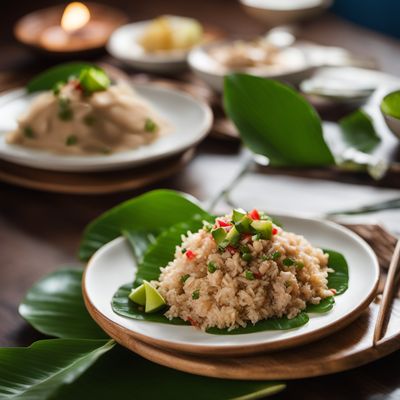
Tuvalu Coconut Tuna
Tuvalu Coconut Tuna is a traditional dish from the island nation of Tuvalu. This dish is made with fresh tuna, coconut milk, and other ingredients that are cooked together to...

Talautu
Talautu is a traditional Samoan dish made with taro leaves and coconut cream. It is a popular dish in Samoa and other Pacific Island countries.
Tuvaluan cuisine recipes Browse all »

Tuvaluan Coconut Jam Cake
Tropical Delight: Tuvaluan Coconut Jam Cake

Tuvaluan Coconut Cream Gelato
Tropical Delight: Tuvaluan Coconut Cream Gelato

Talautu with Coconut Cream Sauce
Island Delight: Talautu - A Taste of Tuvalu
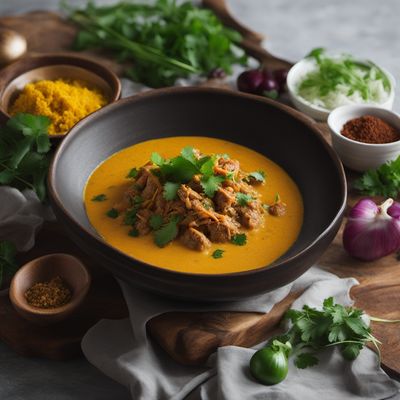
Tuvalu Coconut Tuna Curry
Island Delight: Tuvalu Coconut Tuna Curry

Crispy Coconut Artichokes
Tropical Twist on Italian Delicacy: Crispy Coconut Artichokes
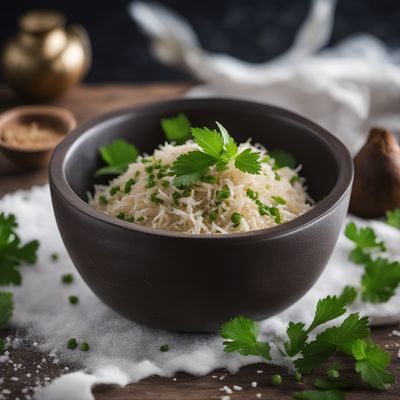
Tuvaluan Coconut Truffade
Coconut-infused Truffade: A Tropical Twist on a French Classic

Pio Quinto with a Tuvaluan Twist
Tropical Delight: Tuvaluan Pio Quinto

Tuvaluan-style Coconut Tortelli
Island Delight: Tuvaluan Coconut Tortelli
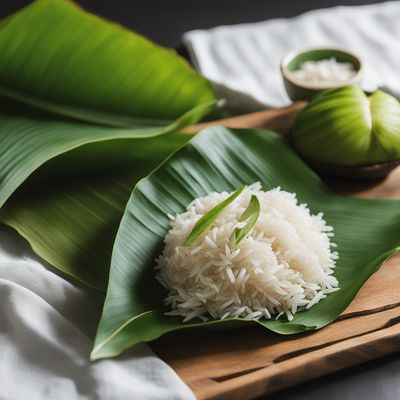
Tuvaluan-style Coconut Rice Wrapped in Banana Leaves
Tropical Delight: Tuvaluan Coconut Rice Parcels
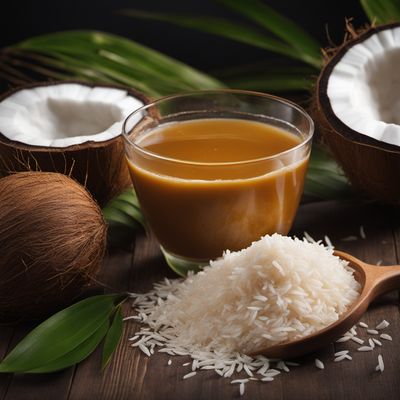
Tuvaluan Coconut Athirasa
Tropical Delight: Tuvaluan Coconut Athirasa

Tuvaluan Coconut Bread with Pineapple Filling
Tropical Delight: Tuvaluan Coconut Pineapple Bread
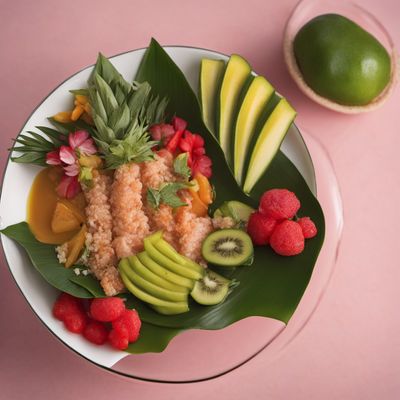
Tuvaluan-style Ambuyat
Tropical Tapioca Delight: Tuvaluan Ambuyat